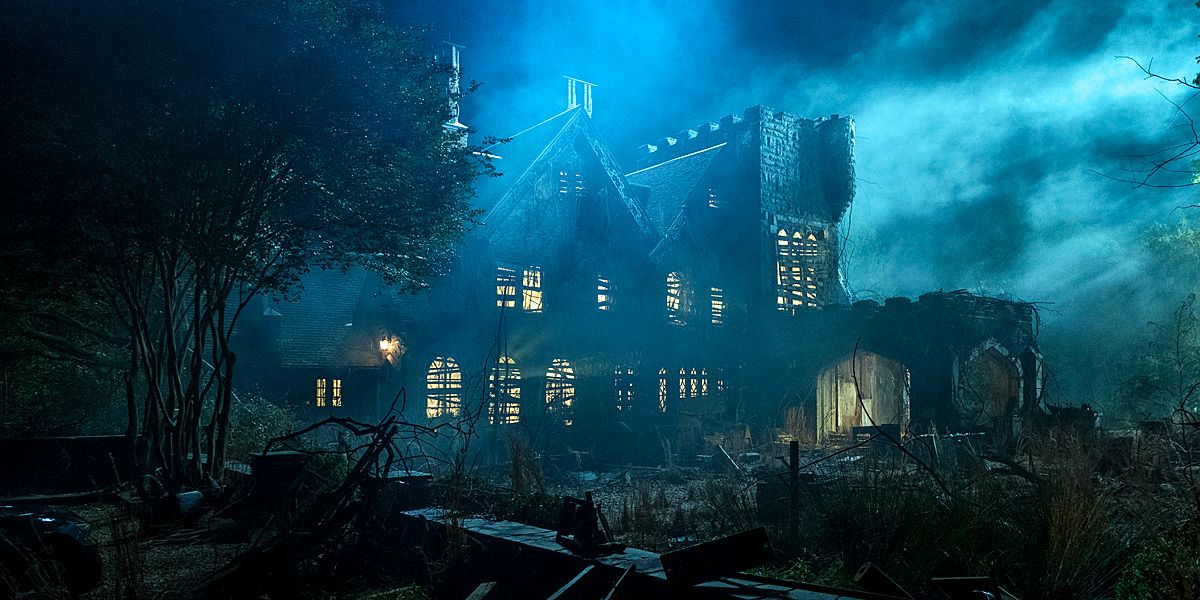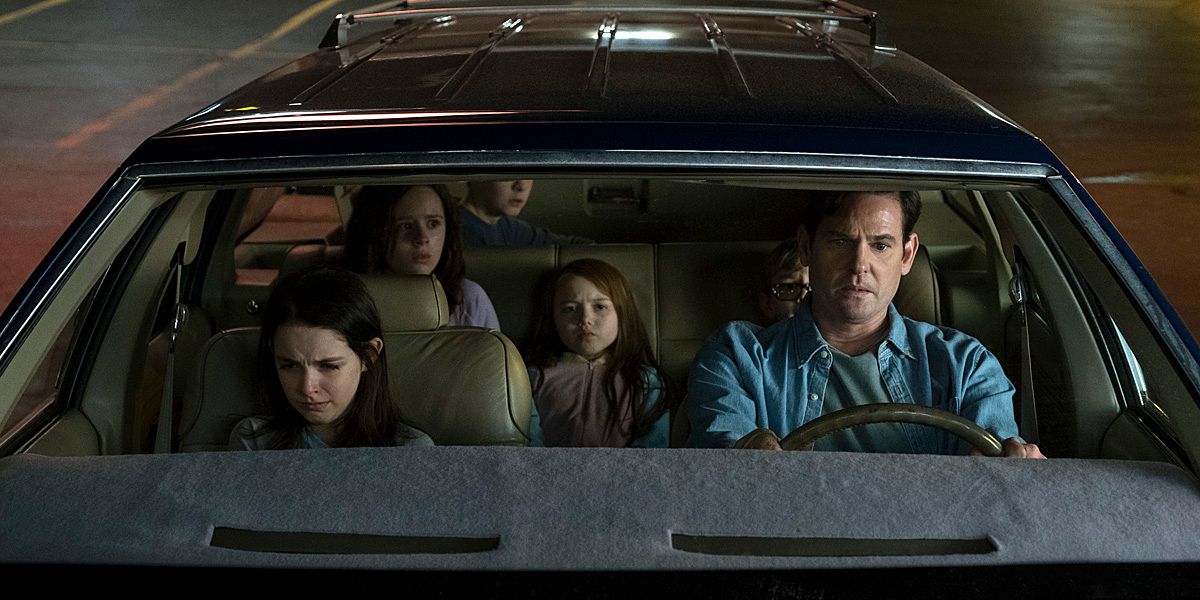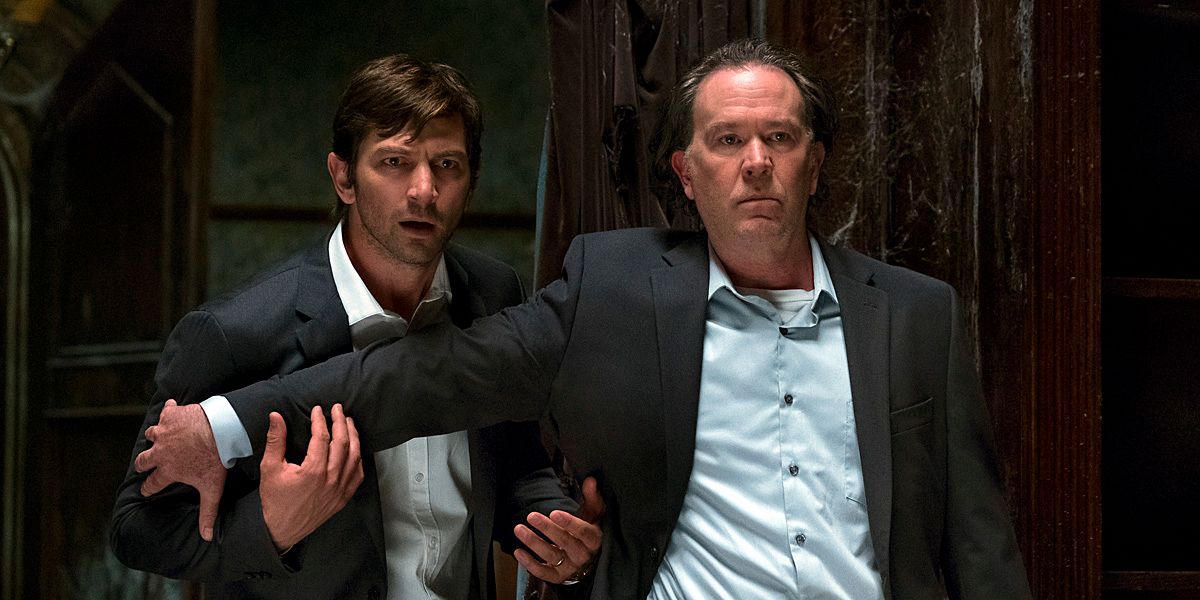The characters in The Haunting of Hill House are haunted not only by the ghosts that inhabited their childhood home, but also by the traumas they’ve accumulated over the course of their lives. In Mike Flanagan’s 10-episode adaptation of Shirley Jackson’s celebrated 1959 horror novel, the five Crain siblings lived for a short time in the sprawling, crumbling estate known as Hill House, but their experience there has remained with them for decades.
Only loosely based on Jackson’s novel, which primarily followed paranormal investigators looking into the secrets of the allegedly haunted house, the Netflix series splits its time between the past and the present, moving seamlessly between the two. In the past, Hugh Crain (Henry Thomas) and his wife Olivia (Carla Gugino) have brought five children to Hill House, which they intend to renovate and sell at a hefty profit, so they may then build their "forever home." The house, however, appears to have other plans, as its wreaks havoc on the sensitive family members, some of whom possess extrasensory abilities.
RELATED: Netflix's Haunting of Hill House Trailer Promises a Very Bad Dream
Early on, The Haunting of Hill House depicts the Crain family’s late-night flight from Hill House, although not everyone escapes. As adults, the Crain children are still scarred from their childhood experience, and their relationships with each other remain troubled. They’re also mostly estranged from their father Hugh (played as an older man by Timothy Hutton), who lost custody of the children following the incidents at Hill House, and went on to spin stories of the supposed haunting to anyone who would listen.
Eldest sibling Steven (Michiel Huisman) has also capitalized on the family’s story, writing a bestselling book about the notorious Hill House haunting, and using that as a jumping-off point for an entire series about famous haunted places. Shirley (Elizabeth Reaser), the next-eldest, has channeled her grief into work as a funeral director, helping other families process the pain of loss. The sensitive Theodora (Kate Siegel), who can glean psychic impressions from people and objects with a touch of her hands, has become a therapist, also helping other families deal with issues that her own has yet to address.
The youngest Crains, twins Luke (Oliver Jackson-Cohen) and Nell (Victoria Pedretti), are the most troubled; Luke has turned to heroin to blot out the apparitions that he still sees, and has been in and out of rehab, while Nell suffers from undefined mental illnesses, which she treats through a variety of conventional and unconventional means. Everyone in the family seems deeply unhappy, and that’s before a devastating tragedy brings them all back together, for a new round of fighting and yelling, and haunting.
Page 2: [valnet-url-page page=2 paginated=0 text='The%20Line%20Between%20Past%20%26%20Present%20Is%20Often%20Blurred']
The series takes fully half of its 10-episode season just to cover that initial incident and the gathering of the siblings, as each of the first five episodes goes over much of the same ground from different perspectives. Flanagan, the director and head writer, works hard to establish each character, but the individual episodes, with their bloated running times (in some cases up to nearly 70 minutes), still come off as repetitive, and the story is barely getting started by the time the season is halfway over.
Although there are some genuinely creepy moments (even though its extended length is taxing, the Nell-focused fifth episode has a wonderfully unsettling payoff), most of Hill House is focused on family drama, with betrayals and recriminations and long-simmering resentments. Even the substantial flashback scenes, with the siblings as children encountering the horrors of Hill House, are just as concerned with the dysfunctional relationships in the family as they are with the unexplained menaces lurking around every corner.
Especially in the intense sixth episode, which unfolds in a series of showy, distracting long takes, the line between the past and the present is often blurry, with characters moving fluidly between the two, both as children and as adults. Flanagan very effectively played with the shifting boundaries between past and present and reality and hallucination in his 2013 breakthrough horror movie Oculus, but here that constant back and forth becomes tedious and tiresome, especially in the frequent use of cutesy match cuts (a door closing or opening, a line responded to in a different context) to transition from one time period to the other.
RELATED: Chilling Adventures of Sabrina, Umbrella Academy & More Descend on SDCC
The performances are relatively understated, which fits for the slow-burn style of Hill House, but that sometimes makes the horrors seem less horrific. Siegel makes the strongest impression as the adult Theodora, whose psychic abilities are the most pronounced and whose bad-girl style (complete with picking up strangers in bars) sets her apart from a family full of bland whiners. Not that Theodora doesn’t do her share of moaning and wailing, though, and the series seems as interested in evoking tears as it is in evoking fear.
Flanagan has always grounded the terrors of his films (which also include Hush, Before I Wake and Gerald’s Game) in genuine human emotions, but Hill House drags out those emotions until they lose their impact, toning down the scares along the way. Flanagan’s filmmaking is still elegant, with meticulous blocking that places the ghouls and ghosts in just the right part of the frame to maximize their shock and dread. But like everything in Hill House, that terror gets muted, slowed down and picked over so much that it ends up banal and lifeless.
Arriving Friday on Netflix, The Haunting of Hill House stars Michiel Huisman, Carla Gugino, Henry Thomas, Elizabeth Reaser, Kate Siegel, Timothy Hutton, Oliver Jackson-Cohen, Lulu Wilson, Victoria Pedretti, Mckenna Grace, Violet McGraw, Paxton Singleton and Julian Hilliard, with Annabeth Gish.



